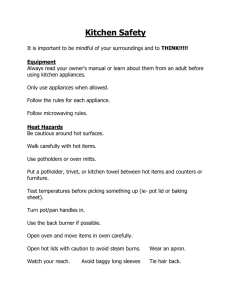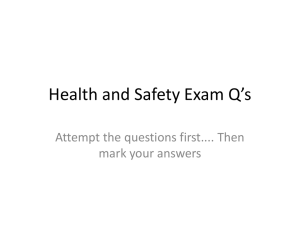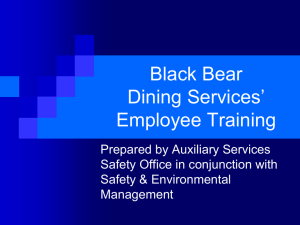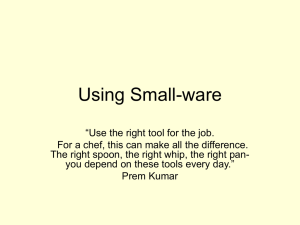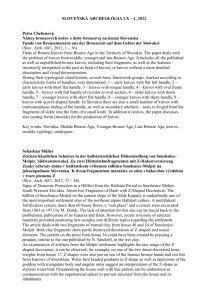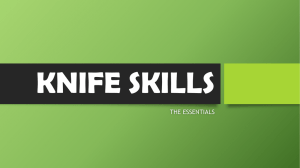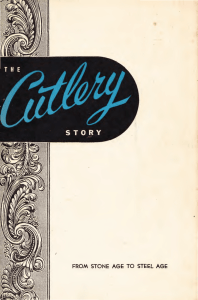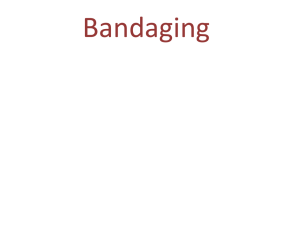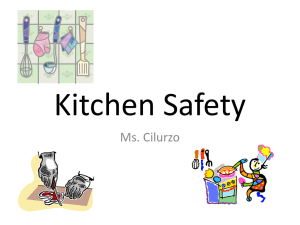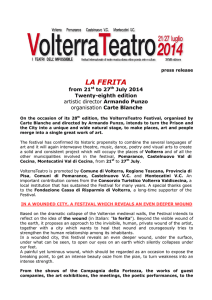Kitchen Safety - Portal.state.pa.us
advertisement
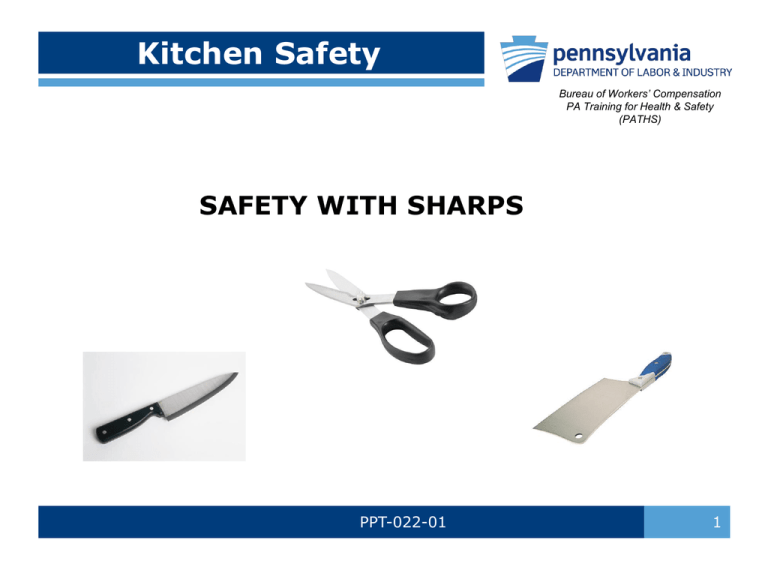
Kitchen Safety Bureau of Workers’ Compensation PA Training for Health & Safety (PATHS) SAFETY WITH SHARPS PPT-022-01 1 Topics • Knife safety • Safety with scissors • Safety with sharps • Cuts • Injury reporting PPT-022-01 2 Safety with Knives Knives are very useful tools when you are working in the kitchen, but they also can be very dangerous if not handled and cared for properly. Remember, knives are one of the most dangerous things around a kitchen and should be handled with great caution. PPT-022-01 3 Knife Safety Tips • Use good, sturdy knives that are well balanced and do not easily bend • Use a cutting board – do not use kitchen counters, metal, glass or steel surfaces when chopping, slicing or mincing • Place a damp cloth under the cutting board to prevent it from slipping PPT-022-01 4 Knife Safety Tips • • • Use the proper cutting board – plastic boards are dishwasher safe and more sanitary than wooden boards, but they can dull knives quickly Wooden boards are ideal but need thorough cleansing to remain sanitary Protect your fingers by curling them under and positioning them on top of the item to be cut PPT-022-01 5 Knife Safety • Keep knives sharpened • Always store knives in a knife holder or on a magnetic wall strip • Store knives from largest to smallest with blades facing the same direction • Use Kevlar gloves for added protection • Never attempt to catch a falling knife! • Never cut anything held in your hand • Never cut toward yourself PPT-022-01 6 Knife Safety Use knives for their intended purpose only Keep knives clean Select the correct knife for the job Carry knives down and by your side with the blade to the back • Let people know you’re walking with a knife by saying something like “knife walking” • Put knives down safely • • • • PPT-022-01 7 Safety with Scissors • Keep scissors sharpened • Use proper scissors for the job being done • Do not try and catch falling scissors • Carry scissors with the blades closed • Hand scissors to someone with the handle facing them PPT-022-01 8 Sharps Safety • When using a box cutter, cut away from yourself • Keep box cutters closed when not in use • Put broken glass in a safe container & mark it • Do not pick up broken glass with your bare hands • Always turn a slicer off and dial the blade to “0” before moving product or cleaning • Always wear the correct PPE when cleaning a slicer • When using a potato peeler, peel away from yourself PPT-022-01 9 Cuts • If you cut yourself, wash the wound thoroughly under cold water • If the wound is shallow and the bleeding stops, dry the skin around it with paper or a clean cloth • If available, put an “infection prevention” cream/spray on the wound • Cover the wound with a sterile bandage to keep the wound shielded and clean PPT-022-01 10 Cuts To stop bleeding if the wound is deep: → Apply pressure → Raise the wound site above the heart → Seek medical attention a.s.a.p. PPT-022-01 11 Report On-The-Job Injuries Report any on-the-job injuries to your supervisor as soon as possible, and make sure an injury report is completed a.s.a.p. PPT-022-01 12 Summary • Knives, scissors and other cutting objects should be kept sharpened • Never try to catch a falling knife/sharp object • Carry knives and sharp objects in a safe position • Hand knives and scissors to someone with the handle facing the person • Never carry knives or scissors in your pocket • If you receive a cut stop the bleeding using direct pressure and/or wound elevation • Report on-the-job injuries to your supervisor a.s.a.p. PPT-022-01 13 Questions PPT-022-01 14
